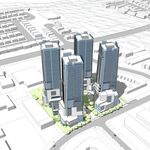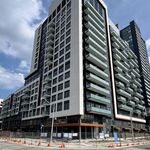Here are five things to know about the origins of the 401 on its 60th birthday.
1. The 401 was supposed to be a Toronto bypass
In 1950, prior to construction of the 401 and Gardiner Expressway, all east-west motor traffic in Southern Ontario had to pass through downtown Toronto using regular city streets. The 401—originally billed as a "bypass"—was built in conjunction with Highway 400 to divert traffic over top of Toronto through what was then mostly fields and new housing subdivisions.
2. The interchanges were amazing
Most motorists in Toronto had never experienced a highway interchange until the 401 opened. The gigantic cloverleaf at the intersection of the 400 and 401—nicknamed the "Crossroads of Canada" for its sheer scale—was the most complex ever built in Ontario when it was finished. The province thought the interchanges so complex that it made charts available to schools "with a view to educating drivers to be."
Torstar News Service file
When it was first built, local drivers were awed by the 401’s complex interchanges.
3. The road was supposed be lined with trees and flowers
It was to be a "thing of beauty to behold." As part of Highway 401 construction, the province agreed to replace every tree it chopped down, making the Toronto portion of the highway a giant avenue of more than 300,000 maples, pines, and Douglas firs. The province also toyed with the idea of planting 2.5-metre rose bushes along the shoulder of the roadway; partly to beautify the road, and partly as a safety measure. The roses, the highways department thought, would slow motorists and act as snow fences in winter.
4. Construction didn't go as planned
The Toronto portion of the 401 contained one of the largest concentrations of highway bridges, overpasses, and underpasses in the province, and building all these gigantic structures at the same time was a significant engineering challenge. Hurricane Hazel heavily damaged the unfinished bridge over the Humber River in 1954 and the bridge at the Don River had to be redesigned when soil conditions proved challenging. A shortage of structural steel from the United States also delayed the project.
City of Toronto Archives
Building the local portion of Highway 401 took more than six years, and was delayed by everything from hurricanes to steel shortages.
5. The 401 was never a driver's paradise
No sooner had it opened were drivers complaining of traffic tie-ups. Thousands of people living in the vicinity of the highway used the 401 for local trips, slowing down those using the road for its intended purpose: bypassing Toronto. The road, which was designed more than a decade before it opened, was already a target for expansion to six lanes in April, 1956. Sixty years later, the Toronto portion of the 401 is the busiest section of highway in the world.






